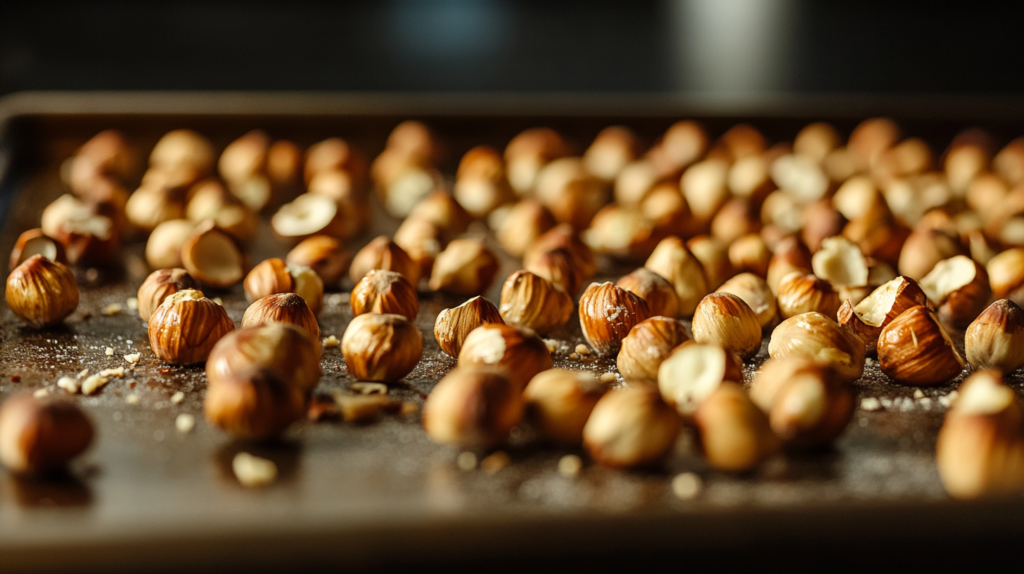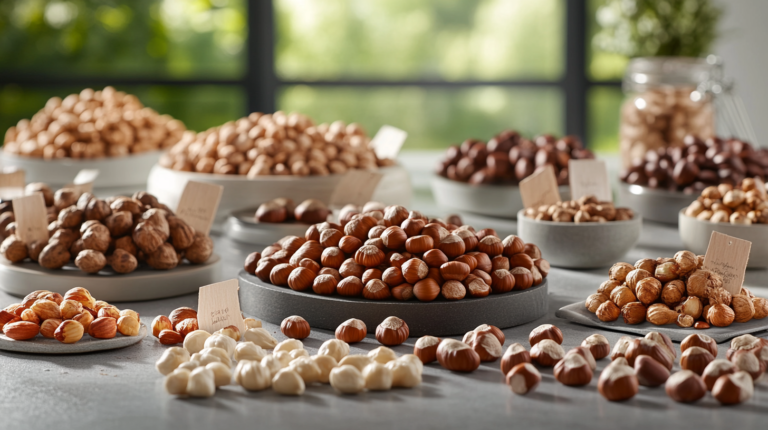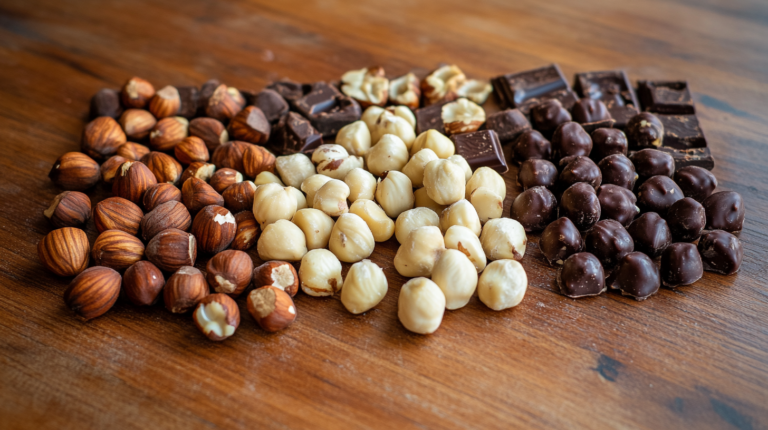Hazelnut Varieties That Are Best for Homemade Nutella
When it comes to making homemade Nutella, the choice of hazelnuts can significantly impact the flavor, texture, and overall quality of your chocolate hazelnut spread. While many recipes simply call for “hazelnuts” without specifying a particular variety, understanding the different types of hazelnuts available can help you create a superior homemade Nutella.
Common Hazelnut Varieties
There are several hazelnut varieties cultivated around the world, each with its own unique characteristics:
European Hazelnut (Corylus avellana)
The European hazelnut, also known as the common hazelnut, is the most widely cultivated variety globally. It’s the primary type used in commercial Nutella production and is an excellent choice for homemade versions.
Characteristics:
– Rich, sweet flavor
– High oil content
– Smooth texture when ground
Best cultivars for homemade Nutella:
– Barcelona: Large nuts with a rich flavor
– Ennis: Very large nuts with excellent taste
– Lewis: Medium-sized nuts with a strong hazelnut flavor
American Hazelnut (Corylus americana)
Native to eastern North America, the American hazelnut is smaller than its European counterpart but offers a unique flavor profile.
Characteristics:
– Intense, slightly wild flavor
– Lower oil content compared to European varieties
– Slightly grittier texture when ground
While not traditionally used for Nutella, American hazelnuts can add an interesting twist to homemade versions, especially when combined with European varieties.
Beaked Hazelnut (Corylus cornuta)
Another North American native, the beaked hazelnut is named for its distinctive elongated husk.
Characteristics:
– Small nuts with a strong flavor
– Lower yield compared to other varieties
– Can add complexity to homemade Nutella when mixed with European hazelnuts
Turkish Hazelnut (Corylus colurna)
Also known as the Turkish tree hazelnut, this variety is less common but can be found in some specialty markets.
Characteristics:
– Large, flavorful nuts
– High oil content
– Excellent for creating smooth, creamy homemade Nutella
Factors to Consider When Choosing Hazelnuts for Homemade Nutella
When selecting hazelnuts for your homemade Nutella, consider the following factors:
Flavor Profile
Different hazelnut varieties offer distinct flavor notes. European hazelnuts generally provide a classic, sweet hazelnut taste that closely mimics commercial Nutella. American and beaked hazelnuts can add depth and complexity to your spread, but may result in a less traditional flavor.
Oil Content
Hazelnuts with higher oil content will produce a smoother, creamier spread. European and Turkish varieties typically have higher oil content, making them ideal for homemade Nutella.
Availability
While European hazelnuts are widely available, other varieties may be harder to find depending on your location. Consider sourcing from local farmers’ markets or specialty nut suppliers for less common varieties.
Freshness
Regardless of the variety, always opt for the freshest hazelnuts possible. Fresh nuts will have a more vibrant flavor and higher oil content, resulting in a better-tasting homemade Nutella.
Preparing Hazelnuts for Homemade Nutella
Proper preparation of hazelnuts is crucial for achieving the best texture and flavor in your homemade Nutella:

Roasting
Roasting hazelnuts enhances their flavor and makes it easier to remove their skins. Here’s a simple method:
1. Preheat your oven to 350°F (175°C).
2. Spread hazelnuts in a single layer on a baking sheet.
3. Roast for 10-15 minutes, stirring occasionally, until the skins begin to split and the nuts turn golden brown.
4. Remove from the oven and let cool slightly[1].
Removing Skins
Hazelnut skins can impart a bitter flavor to your Nutella, so it’s best to remove them:
1. Once the roasted hazelnuts are cool enough to handle, wrap them in a clean kitchen towel.
2. Rub the nuts vigorously inside the towel to loosen the skins.
3. Open the towel and separate the nuts from the loose skins[1].
Don’t worry if some skins remain attached; a few won’t significantly affect the final product.
Creating the Perfect Blend
While using a single hazelnut variety can produce excellent results, experimenting with blends can lead to a unique and personalized homemade Nutella:
Classic Blend
For a traditional Nutella flavor, use 100% European hazelnuts, focusing on cultivars like Barcelona, Ennis, or Lewis.
Complex Blend
Try a mixture of 80% European hazelnuts and 20% American hazelnuts for added depth and a slightly wild note.
Gourmet Blend
Combine 70% European hazelnuts, 20% Turkish hazelnuts, and 10% beaked hazelnuts for a complex, nuanced flavor profile.
Making Homemade Nutella
Once you’ve selected and prepared your hazelnuts, you’re ready to make your homemade Nutella. Here’s a basic recipe to get you started:
Ingredients:
– 2 cups roasted, skinned hazelnuts
– 1/4 cup unsweetened cocoa powder
– 1/2 cup powdered sugar (adjust to taste)
– 1/4 teaspoon salt
– 1/2 teaspoon vanilla extract
– 2-4 tablespoons hazelnut oil or mild vegetable oil
Instructions:
1. Process the hazelnuts in a food processor or high-powered blender until they form a smooth butter, scraping down the sides as needed.
2. Add the cocoa powder, powdered sugar, salt, and vanilla extract. Process until well combined.
3. With the machine running, slowly drizzle in the oil until you reach your desired consistency.
4. Taste and adjust sweetness if needed[2].
Storage and Shelf Life
Homemade Nutella can be stored in an airtight container at room temperature for up to 2 weeks, or in the refrigerator for up to 1 month. Note that refrigeration may cause the spread to harden slightly; simply let it come to room temperature before using[3].
Customizing Your Homemade Nutella
One of the advantages of making Nutella at home is the ability to customize it to your preferences:
Sweetness Level
Adjust the amount of powdered sugar to control sweetness. You can also experiment with alternative sweeteners like maple syrup or honey.
Chocolate Intensity
Vary the cocoa powder amount or try using melted dark chocolate for a richer chocolate flavor.
Texture
Control the consistency by adjusting the amount of oil added. Less oil will result in a thicker spread, while more oil will create a more pourable consistency.
Additional Flavors
Experiment with adding complementary flavors like espresso powder, cinnamon, or a pinch of sea salt to create unique variations.
Conclusion
Creating homemade Nutella allows you to control the ingredients and customize the flavor to your liking. By carefully selecting and blending different hazelnut varieties, you can craft a spread that rivals or even surpasses the commercial version. Whether you opt for the classic European hazelnut or experiment with American and Turkish varieties, the key to success lies in using fresh, high-quality nuts and taking the time to properly roast and prepare them. With a little experimentation, you’ll soon be enjoying your own perfect blend of chocolate hazelnut goodness.
Sources:
[1] https://littlespicejar.com/homemade-nutella/
[2] https://cookingforpeanuts.com/healthy-nutella-recipe/
[3] https://chocolatecoveredkatie.com/better-than-nutella/
[4] https://www.glutenfreealchemist.com/chocolate-hazelnut-spread-home-made-healthy-nutella/
[5] https://www.youtube.com/watch?v=HwKAEXz1HPY
[6] https://www.nutella.com/us/en/inside-nutella/quality-and-ingredients/hazelnuts
[7] https://aradbranding.com/en/best-types-of-hazelnuts-in-the-world/
[8] https://www.ferrerohazelnutcompany.com/int/en/our-hazelnuts/about-hazelnuts






